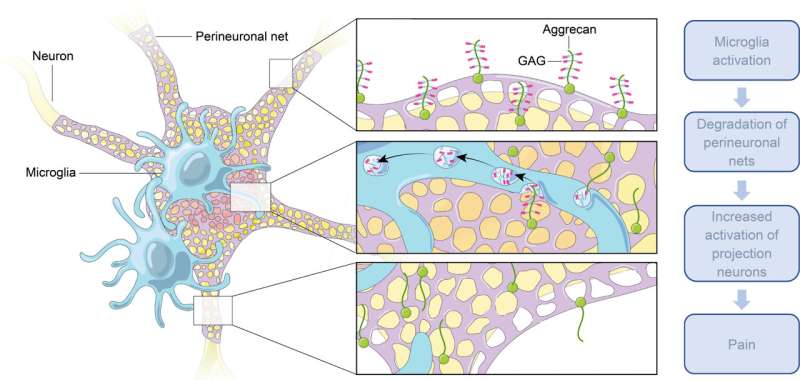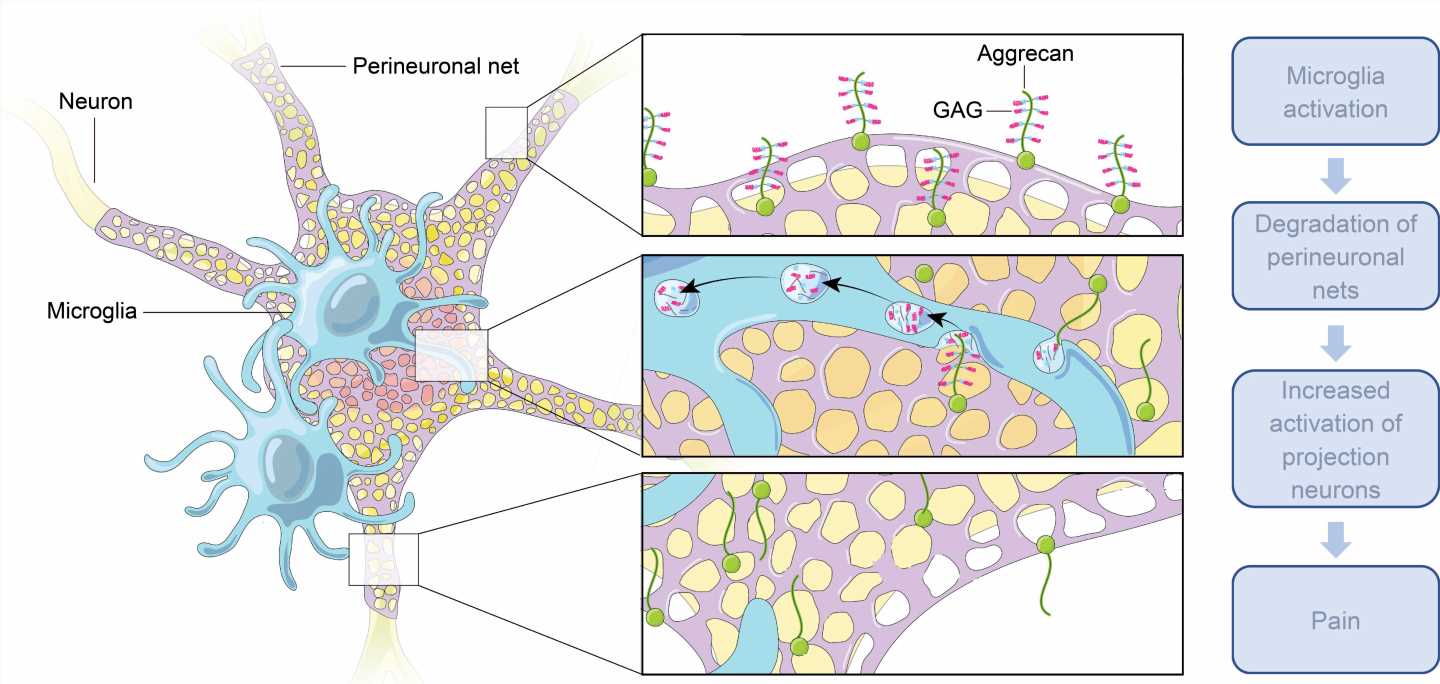
A team of researchers working at McGill University has found that activation of microglia in the spinal cord following a nerve injury can lead to an increased sensitivity to pain. In their paper published in the journal Science, the group describes their study of nerve cells in injured mice and what it showed them about the possible source of some types of chronic back pain.
To learn more about the source of some types of chronic back pain, the researchers effectuated backbone nerve injuries in eight 12-week-old mice. They then collected projection neuron samples from them. Such nerve cells are known to transmit pain signals. Next, the researchers applied a stain to the projection neurons still left in the mice. Its purpose was to show whether an outer covering known as perineuronal net (PNN) was present. They found that, after injury, the volume of PNN on the projection neurons fell by 76.3% over three days. They also found that the stain had made its way to microglia—a type of immune cell.
To learn more about the role that microglia might be playing in the decrease in PNN, the researchers worked with a new group of mice. First, they divided them into two groups. One group had their microglia removed. Testing showed that those mice did not see a drop in PNN after injury, while the other group, which had served as a control, did.
The researchers then removed the PPN from the projection neurons in a new batch of mice and found that doing so resulted in hypersensitivity to heat (as seen by their facial expressions) and other instances of pain that occurred at random.
Source: Read Full Article
